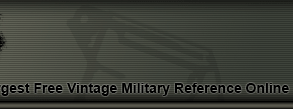|
WWII German Luftshutz Helmet - Civil Defense -
The German Civil Defense forces in WWII were known as Lufyschutz. The helmet featured here was
Worned by the Civil Defense forces. This organization was tasked with multiple duties. Anywhere
from fighting fires to clearing debris from the streets after bombing raids. At the end of the war,
Luftschuts forces helped in the last ditch defense of Berlin against the advancing allied forces.
The item featured here is a WWII German Luftschutz helmet. Known as the "Gladiator" type due to the
similarities in shape with its namesake. There were three different types of Luftschutz helmets
employed during the war. As improvements were made to the design, a new model was created to
replace the old helmet.
One interesting feature of the helmet is the large sticker in the front of the dome. It was silver
in color. Its design consisted of two spread wings with a swastika in the center.
The body of the helmet was of dark blue color.
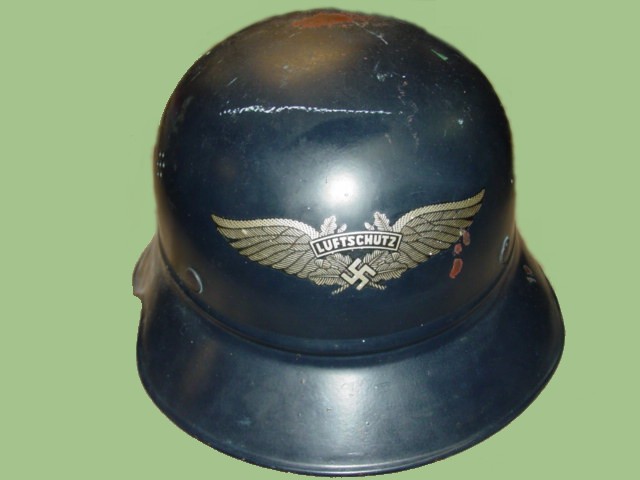
The design of the helmet consisted of well pronounced visor and neckguard characteristics.
The helmet was originally light weight but got progressively heavier as the duties of
the members turned more into combat assignments.
A section called the "bead" connects the dome to the visor and neckguard. This is a rounded line
that covers the entire circumference of the lower dome. The edge of the helmet is rolled in similar
fashion to the M-35 style.
The inside of the neckguard is stamped with markings and also has a rectangular, black paper sticker
with white letters applied to it. The sticker reads:
Vertieb Genenhlight
Gemab & 8 Luftsch tgezets
Korfweite 57
Hochstpre 8.00 rm
|
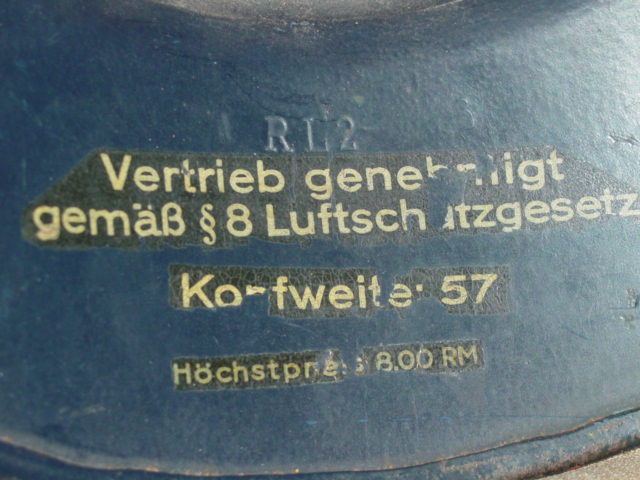
|
The modern German helmet saw its birth during World War One. Its design was so advanced
for the time that the German government saw it fit for the same basic design to be re-employed
during World War Two.
The German helmet of World Wat Two has become one of the most recognizable silhouttes of war.
The helmetss of the Third Reich came in a variety of designs. There were approximatelly
9 different types developed. Even the non-military helmets often displayed the
swastika as a means to show support of the Nazi party. The helmet was constructed of a
combination of metal and leather.
|
|
The helmet comes with a leather liner. In this case it is damaged. There are several fingers that
point towards the center. A string is employed to secure them together. Tightening and loosening
the string controls the height of the helmet and how it will sit on the head of the user.
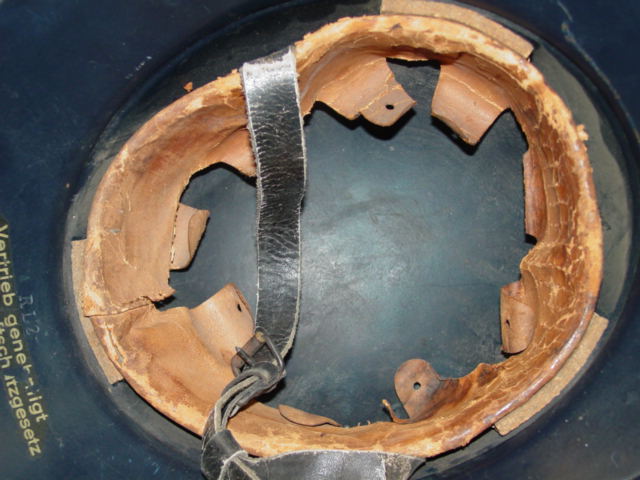
The helmet has two air vents. This contributed to better air flow to keep the head of the
wearer cooler. The shape of the vent holes was very similar to those used in the
police helmet. It gave the helmet a very unique appearance.
Some of the helmets have markings stamped in the inside of the rim. The markings provide information
such as the serial number, name of manufacturer, helmet size, etc. A
markings guide has been provided to help
the collector and enthusiast gain a better understanding of their meaning. It is important to
note that not all possibilities of markings are covered in that section.
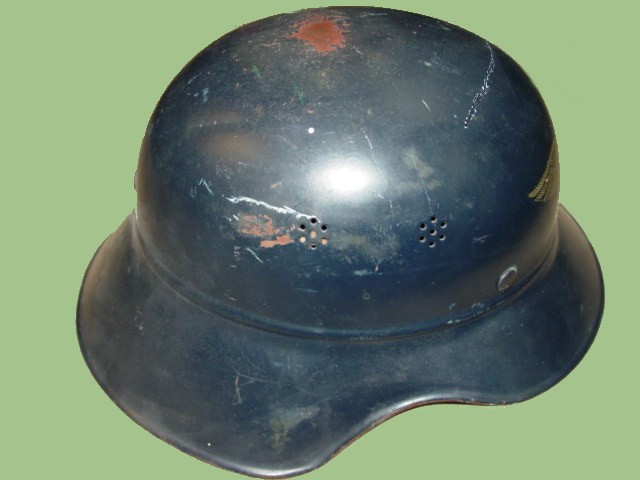
WWII German helmets are currently being
reproduced.
It is becoming more difficult to be able to tell the fake ones from the real ones because
the quality of the reproductions is improving. The collector must become familiarized with
the construction style and materials employed in the manufacturing of this headgear.
Attention to the details is critical in order to be able to determine the authenticity of
the collectible.
If you have an interest is seeing other American military headgear, you can do so by
going to our WWII German helmets
identification guide. Where we cover Army, Navy, Luftwaffe and other organizations.
| 

